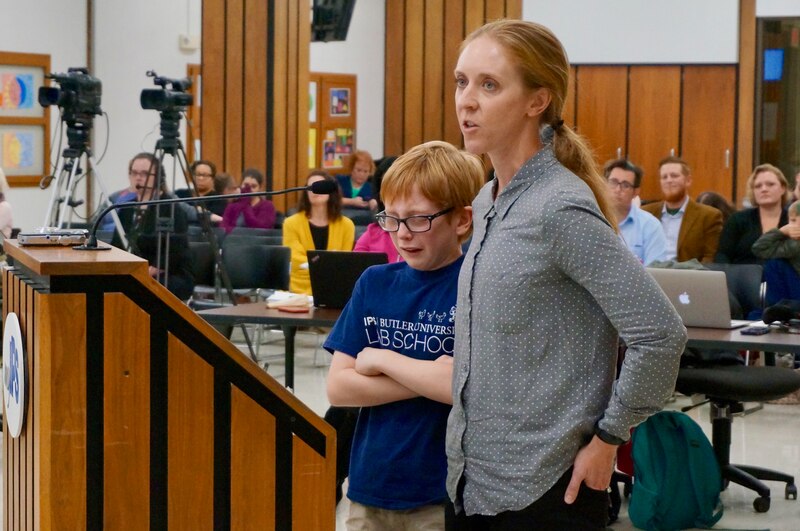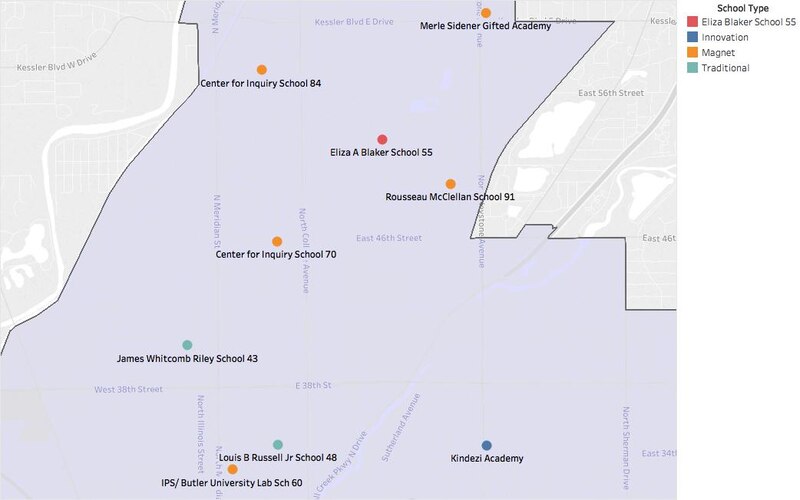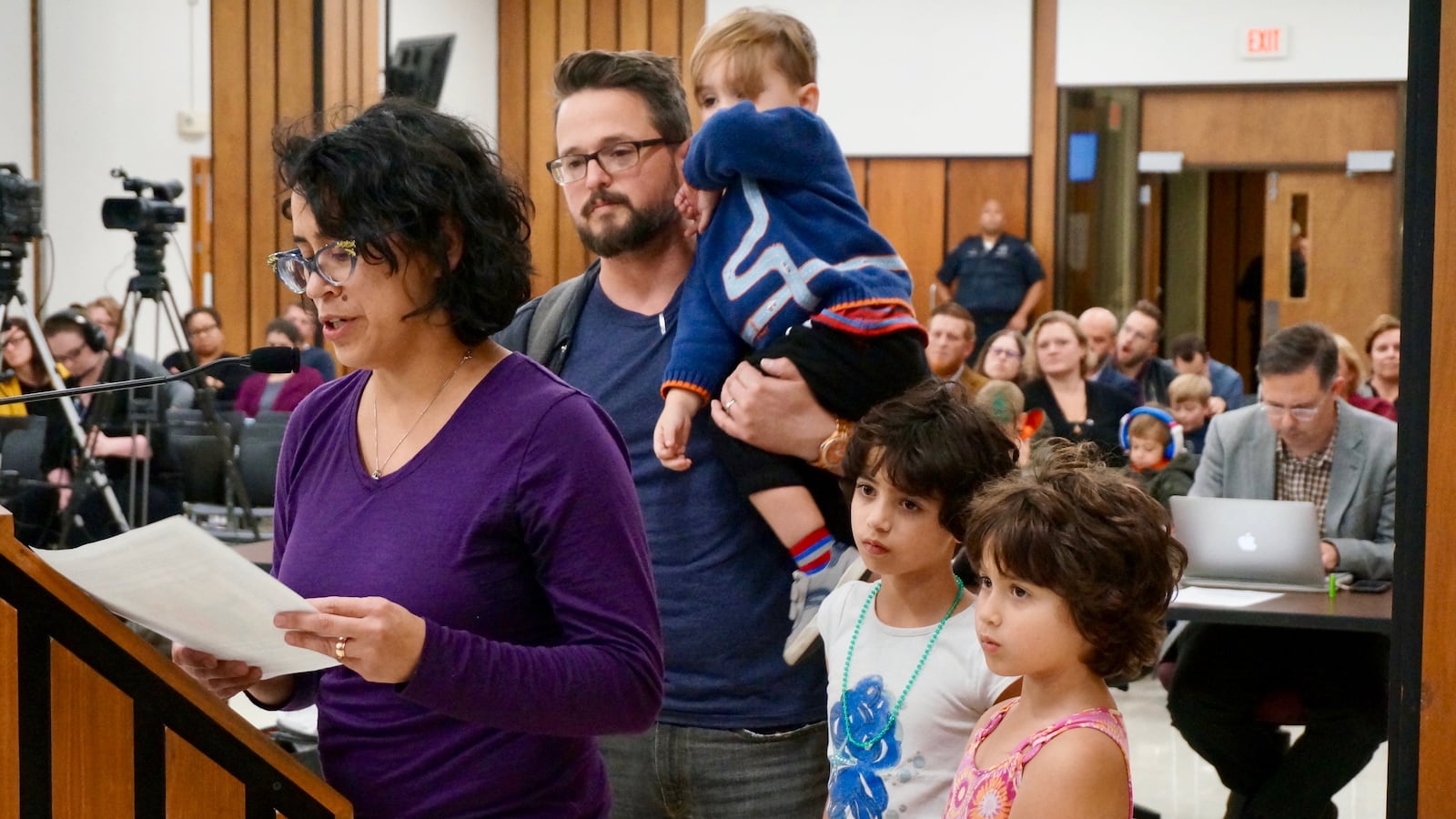The Indianapolis Public Schools board approved a plan to convert School 55 to the second magnet school in partnership with Butler University Thursday. But in the face of pleas from crying students and parents, the board modified the proposal.
The challenge facing the board was finding a way to accommodate families from across the district who are currently at School 60, the first Butler lab magnet, while also recreating the same school culture at a second campus and containing transportation costs.
The board is committed to replicating successful programs throughout the district, and families need to enroll in newly created programs for them to succeed, said board member Michael O’Connor.
“Some difficult decisions are going to have to be made,” he added.
The decision to convert School 55 to a magnet is the district’s latest move away from the traditional model of assigning students to schools by neighborhood in favor of an approach that encourages families to choose schools by academic focus and philosophy.
Because School 55 will be the second Butler lab magnet, the board designated boundaries for the two schools that aim to reduce transportation costs, balance the number of children eligible for each school and keep the schools diverse. Families who live on the east side of the district will be eligible to apply to School 55. On the west side, families will apply to School 60.
For the 160 students who are currently at School 60 but live in the School 55 boundaries, the initial proposal offered what was meant to be a compromise: They would be allowed to remain at School 60, but the district would no longer bus their children. If they chose to move to School 55, there would be busing.
But the offer did little to appease the parents who delivered impassioned pleas to the board ahead of the vote Thursday.
Nicole Goodson and her son Spencer, a fifth grader at School 60, live on the east side, in the School 55 boundaries.
Spencer went to the microphone with his mother to read a letter to the board. “There are many people out there that can’t drive their children to school,” he said, before his sobs overwhelmed him and he had trouble speaking.
Driving her son to school every day isn’t an option for her family because she and her husband work, Goodson said.
“Zero of Spencer’s closest friends are also zoned for 55,” she said. “My heart ached when I realized that quite possibly Spencer is going to be separated from people he has cared about for over half his life.”

Estimates suggest that providing busing for east side students could cost more than $200,000 per year, or over $1,000 per child, said IPS staffer Joe Gramelspacher.
But in the end, the pleas of parents like Goodson swayed the board. Although they approved the proposal to make School 55 a Butler lab school, they also voted to continue providing transportation to current east side families at School 60 for one year.
“This is the cost of doing business,” said board member Kelly Bentley. “If you are going to expand programs there is going to be an additional cost at least initially.”
But there are other issues raised by current School 60 families that the board didn’t address.
Luba Winship also lives on the east side in the boundary of School 55. She raised concerns that with the proposed boundaries, her youngest child, who is not yet in school, may not be able to win a spot at School 60 because students in the school’s boundaries will have an advantage in the admissions lottery.
“We live less than a mile away from our school,” she said. But “as proposed our last child will have to go to a separate school from his siblings and travel over two and half miles to do so.”
The Butler lab program uses the Reggio Emilia educational philosophy, which emphasizes hands-on learning and allowing students to choose what they study. It began at School 60 about five years ago, and since then, it has become one of the district’s most popular magnet programs. Last year 266 students were placed on the school’s waitlist.
In contrast, enrollment at School 55 has been falling, and the elementary school with grades K-6 enrolled just 172 students last year, far below capacity. When it becomes a magnet school, current students at School 55 will be encouraged to stay. The district plans to expand the school up to 8th grade (something parents pushed for), and in order to fit all the students IPS expects, it will add six portable units to the building.
The effort to expand magnet schools goes hand-in-hand with other changes taking place in the district that emphasize options for families and students instead of neighborhood schools. This fall, the district will use Enroll Indy, common enrollment website that allows families to apply for charter schools and magnet schools in one place. And next year, IPS will convert all of its high schools to magnet programs, where students choose the school’s they attend based on their academic and career interests rather than geography.
School 55 was the last remaining neighborhood school in the area north of 46th Street along the College Avenue corridor. Beginning next year, students who live in that vast territory will have a single boundary school, School 43, which has a new principal following years of instability and low test scores.

The other schools in the northside area offer a broad spectrum of options — Montessori, International Baccalaureate and gifted programs — but they have one thing in common: Students must apply and space is limited.
At most of the district’s magnet schools, families apply the year before and students are admitted by lottery if there are more applicants than seats. Some students get priority in the lottery, including those who have siblings at the school, who live within a zone about a half mile around the school and whose parents work for the district.

